CAMCODER P2 PANASONIC AG-HPX370 DVCPRO HD
Panasonic AG-HPX370 DVCPRO HD Camcorder P2
* AVC-Intra 100, AVC-Intra 50 and DVCPRO HD codecs
* SD/HD switchable
* 50/60Hz switchable
* Master-quality, 4:2:2, 10-bit, full-raster, native 1920 x 1080 recording
* Variable frame rates in 20 steps between 12p and 50p
* Cine-Like Gamma mode
* Comes standard with high-performance 17x HD Fujinon lens
* Can be used in studio configuration
* One clip recording
General
Supply Voltage: DC12V (11V to 17V)
Power Consumption: Approx. 19 W (with standard VF, lens, LCD monitor ON)
Operating Temperature: 0oC to 40oC
Keeping Temperature: -20oC to 60oC
Operating Humidity: 10% to 85% (no condensation)
Weight: Approx. 3.6 kg excluding battery and accessories
Approx. 5 kg with supplied Fujinon lens
Dimensions (WxHxD): 246 mm x 251 mm x 441 mm, excluding prominent parts
246 mm x 251 mm x 549 mm, with Fujinon lens,
excluding prominent parts
Camera
Pick-up Device: 2.2M pixels Progressive MOS Image sensor x 3
Lens Mount: 1/3" bayonet type
Optical Color Separation: Prism system
ND Filter: 4 position (Clear, 1/4 ND, 1/16 ND, 1/64 ND)
Gain Selection: -3dB, 0dB, 3dB, 6dB, 9dB, 12dB, 24dB
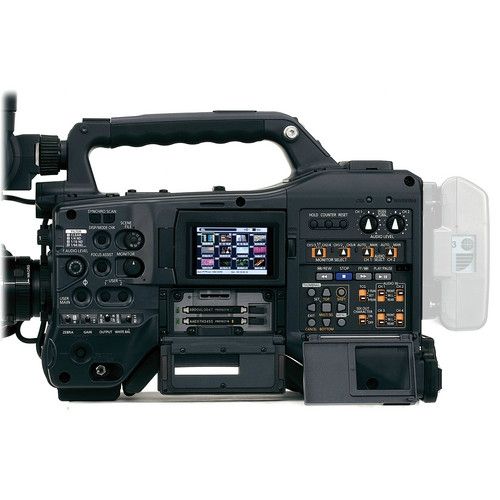
Shutter Speed (Preset):
50i/50p mode: 1/50 (OFF) sec., 1/60 sec., 1/120 sec.,
1/250 sec., 1/500 sec., 1/1000 sec., 1/2000 sec.
25p mode: 1/25 (OFF) sec., 1/50 sec., 1/60 sec.,
1/120 sec., 1/250 sec., 1/500 sec., 1/1000 sec., 1/2000 sec.
60i/60p mode: 1/60(OFF) sec., 1/100 sec., 1/120 sec.,
1/250 sec., 1/500 sec., 1/1000 sec., 1/2000 sec.
30p mode: 1/30(OFF) sec., 1/60 sec., 1/100 sec.,
1/120 sec., 1/250 sec., 1/500 sec., 1/1000 sec., 1/2000 sec.
24p mode: 1/24(OFF) sec., 1/60 sec., 1/100 sec.,
1/120 sec., 1/250 sec., 1/500 sec., 1/1000 sec., 1/2000 sec.
Shutter Speed (Variable):
50i mode: 1/50.0 sec. to 1/250.0 sec.
25p mode: 1/25.0 sec. to 1/250.0 sec.
60i mode: 1/60.0 sec. to 1/249.8 sec.
30p mode: 1/30.0 sec. to 1/249.8 sec.
24p mode: 1/24.0 sec. to 1/249.8 sec.
Shutter Speed (Slow):
50i/50p mode: 1/12.5 sec., 1/25 sec.
25p mode: 1/6.25 sec., 1/12.5 sec.
60i/60p mode: 1/15 sec., 1/30 sec.
30p mode: 1/7.5 sec., 1/15 sec.
24p mode: 1/6 sec., 1/12 sec.
Aperture Angle: 3 deg to 359.5 deg, 0.5 deg step select
Variable Frame Rate :
50 Hz mode: variable 12/15/18/20/21/22/23/24/25/26/27/28/30/
32/34/37/42/45/48/50 fps (frames per second)
59.94Hz mode: variable 12/15/18/20/21/22/24/25/26/27/28/30/
32/34/36/40/44/48/54/60 fps (frames per second)
Sensitivity:
F11 (2000 lx, 3200K, 89.9% reflect, 1080/50i)
F10 (2000 lx, 3200K, 89.9% reflect, 1080/59.94i)
Minimum Luminance: 0.4 lx (F1.6 , Gain 24dB , shutter speed 1/30 sec.)
Horizontal Resolution : More than 1000 TV lines (center)
Memory Card Recorder
Recording Media: P2 Card
Recording Format: AVC-Intra 100/AVC-Intra 50/DVCPRO HD/DVCPRO50/
DVCPRO/DV selectable
Recording Video Signal: 1080/50i, 1080/25p, 1080/25pN, 720/50p, 720/25p, 720/25pN,
(50 Hz) 576/50i, 576/25p
Recording Video Signal: 1080/59.94i, 1080/29.97p, 1080/29.97pN, 1080/23.98p,
(59.94 Hz) 1080/23.98pA, 1080/23.98pN, 720/59.94p, 720/29.97p,
720/29.97pN, 720/23.98p, 720/23.98pN,
480/59.94i, 480/29.97p, 480/23.98p, 480/23.98pA
Recording Time*:
AVC-Intra 100/DVCPRO HD
Approx. 16 min. with a 16GB P2 card
Approx. 32 min. with a 32GB P2 card
Approx. 64 min. with a 64GB P2 card
AVC-Intra 50/DVCPRO50
Approx. 32 min. with a 16GB P2 card
Approx. 64 min. with a 32GB P2 card
Approx. 128 min. with a 64GB P2 card
DVCPRO/DV
Approx. 64 min. with a 16GB P2 card
Approx. 128 min. with a 32GB P2 card
Approx. 256 min. with a 64GB P2 card
* Time shown above is when you record a series of 1 shot to P2 card. Depending on numbers of shots you record, time will get shorter than the number shown above.
Digital Video
Sampling Frequency:
AVC-Intra 100/DVCPRO HD:
Y: 74.2500MHz, PB/PR: 37.1250MHz (50Hz)
Y: 74.1758MHz, PB/PR: 37.0879MHz (59.94Hz)
DVCPRO50: Y: 13.5MHz, PB/PR: 6.75MHz
DVCPRO: Y: 13.5MHz, PB/PR: 3.375MHz
Quantizing:
AVC-Intra 100/AVC-Intra 50: 10bit
DVCPRO HD/DVCPRO50/DVCPRO/DV: 8bit
Video Compression:
AVC-Intra 100/AVC-Intra 50: MPEG-4 AVC/H.264 Intra Profile
DVCPRO HD: DV base compression (SMPTE 370M)
DVCPRO 50/DVCPRO: DV base compression (SMPTE 314M)
DV: DV compression (IEC 61834-2)
Digital Audio
Recording Audio Signal:
AVC-Intra 100/AVC-Intra 50/DVCPRO HD: 48kHz/16bits, 4CH
DVCPRO50: 48kHz/16bits, 4CH
DVCPRO/DV: 48kHz/16bits, 2CH/4CH switchable
Headroom: 20dB/18dB switchable
Video Input/Output
GENLOCK IN: BNC x 1, 1.0V [p-p] 75 Ohm
VIDEO OUT: BNC x 1, 1.0V[p-p] 75 Ohm
SDI OUT: BNC x 2, 0.8V[p-p] 75 Ohm
HD/SD switchable
Audio Input/Output
MIC IN: XLR (3pin), +48 V compatible
MIC: -40/-50/-60 dBu (switchable on menu)
Audio IN: XLR (3pin) x 2 (CH1/CH2), LINE/MIC/+48V switchable
LINE: 0 dBu, MIC: -50/-60 dBu (switchable on menu)
Wireless: 25 pin, D-SUB, -40dBu
Audio Out: Pin jack x 2 (CH1/CH2), Out: 316 mV, 600 Ohm,
Earphone: Stereo mini jack (3.5mm diameter)
Internal Speaker: 28mm round shape x 1
Other Input/Output Signal
TC In: BNC x 1, 0.5 V [p-p] to 8 V [p-p], 10k Ohm
TC Out: BNC x 1, low impedance, 2.0 V +/-0.5 V [p-p]
IEEE 1394: 6 pin, digital In/Out, based on IEEE 1394 Standard
DC In: XLR x 1, 4-pin, DC12V (DC11.0V to 17.0V)
DC Out: 4-pin, DC12V (DC11.0V to 17.0V), max 1.5 A.
Remote: 10 pin
Lens: 12 pin
USB 2.0 (Device): Type-B, 4-pin (USB ver2.0)
USB 2.0 (Host): Type-A, 4-pin (USB ver2.0)
Monitor
LCD Monitor: 3.2-inch approx. 921,000 dots (16:9)
View Finder: 0.45-inch approx. 1,226,000 dots (16:9)
Item Includes :
Fujinon 17x HD lens
Front lens cap
Rear lens cap
Zoom lever
Lens connector cap
Lens hood
Lens hood cap
Eye cup
Shoulder belt
Front audio level knob with screw
Mount cap
BNC connector cap
XLR connector cap
Software CD-ROM
Panasonic AG-HPX370 manual

|
|
|
|
||||||||||||||||||||||||||||||||||||||||||||||||||||||||||||||||||||||||||||||||||||||||||||||||||||||||||||||||||||||||||||||||||||||||||||||||||||||||||||||||||||||||||||||||||||||||||||||||||||||||||||||||||||||||||||||||||||||||||||||||||||||||||||||||||||||||||||||||||||||||||||||||||||||||||||||||||||||||||||

/https%3A%2F%2Fprofilepics.canalblog.com%2Fprofilepics%2F4%2F8%2F482136.jpg)

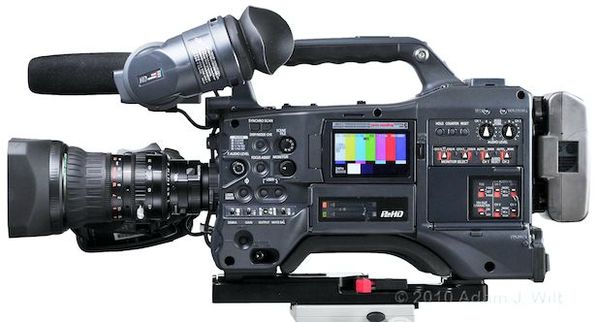
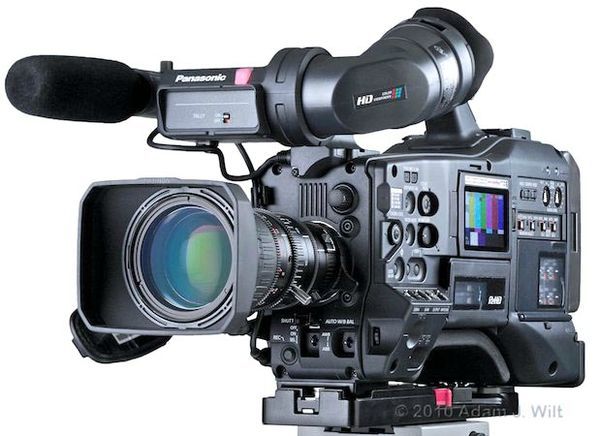



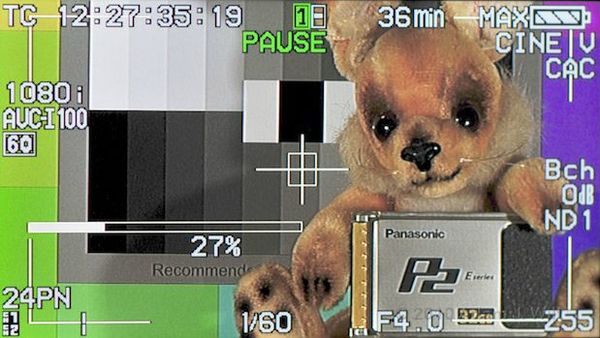
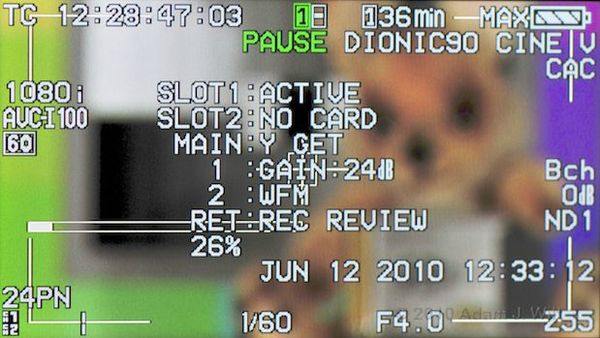

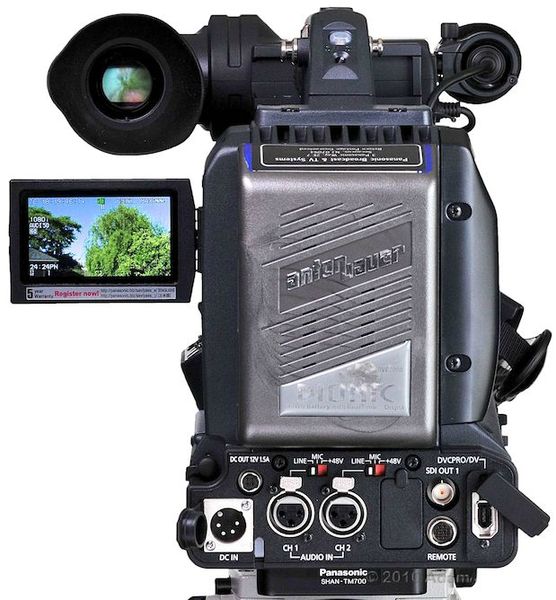
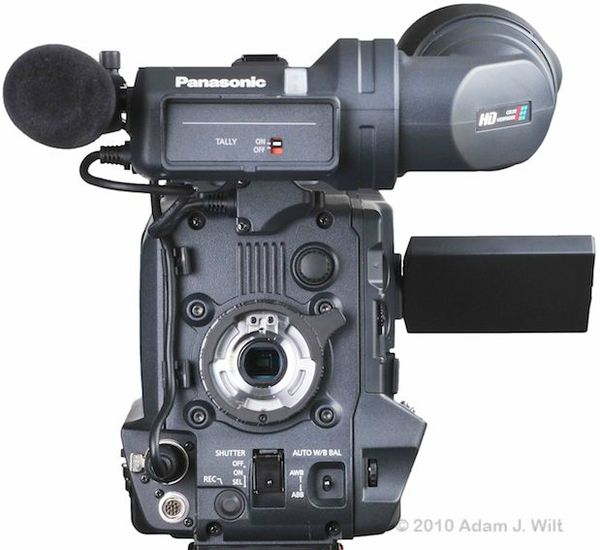


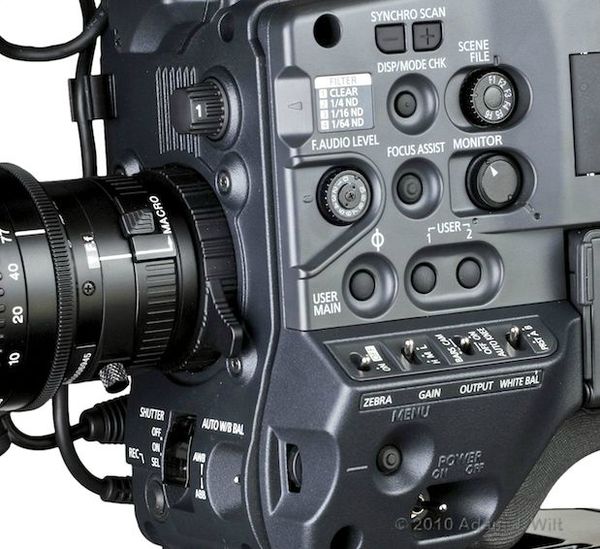
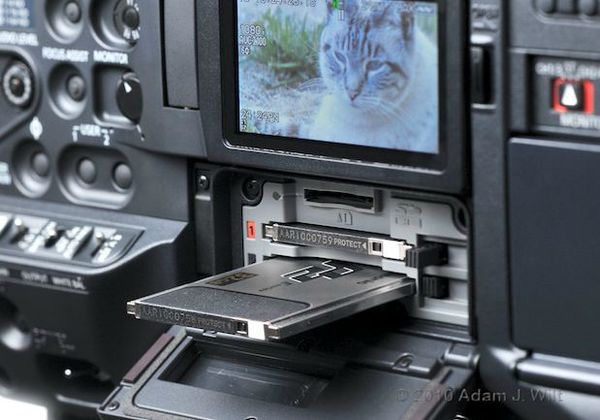


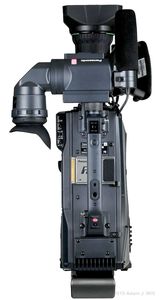
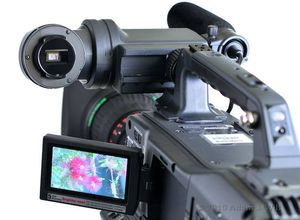



















 The P2 Card: Reliable, Reusable and with Extended Recording Time
The P2 Card: Reliable, Reusable and with Extended Recording Time















/image%2F1325762%2F20240407%2Fob_ad7299_61795905.jpg)
/image%2F0405671%2F20240306%2Fob_a2f024_4507312lpw-4507315-article-londresbour.jpg)
/image%2F0405671%2F20240306%2Fob_fd88c1_it-professional-working-with-servers-2.jpg)
/image%2F0405671%2F20240303%2Fob_b39037_sonu-venice-2-camera.jpg)